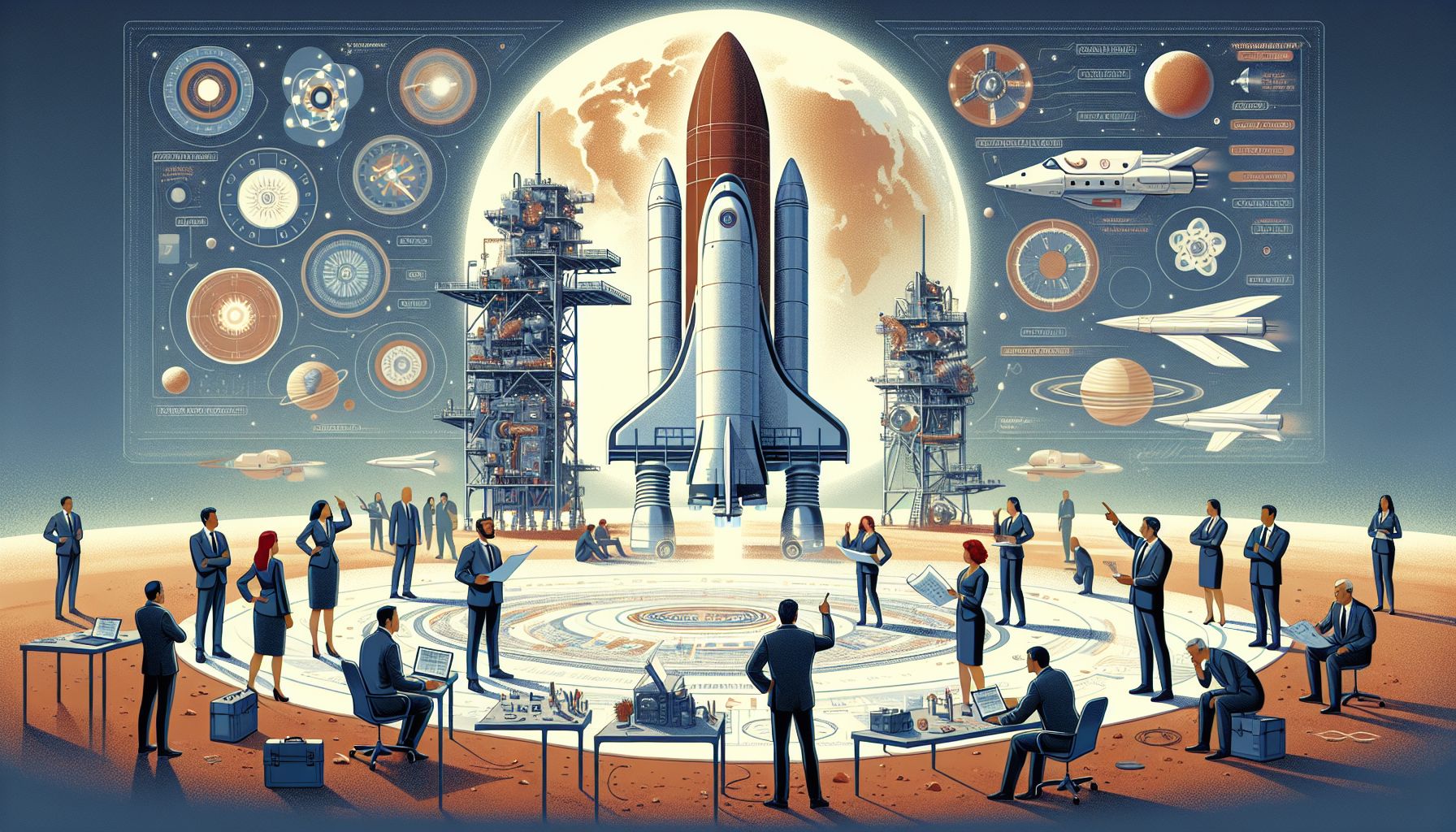📌 Let’s explore the topic in depth and see what insights we can uncover.
⚡ “Is the idea of packing your bags for an adventure on Mars thrilling? You might want to reconsider after learning about the multitude of engineering hurdles humans must conquer first—not for the faint of heart!”
As humanity continues to push the boundaries of exploration, our eyes are set on the red planet, Mars. This celestial body, a mere 34 million miles away at its closest, has been the subject of fascination and speculation for centuries. 🚀 But is a voyage to Mars merely a sci-fi fantasy, or could it become a reality in our lifetimes? NASA, SpaceX, and other international space agencies are actively working towards this dream. However, this journey is not without its share of challenges. It’s akin to Columbus setting sail for the New World, but with infinitely more variables and uncertainties. This article will delve into the engineering hurdles faced in this quest, and the innovative solutions proposed to overcome them. Buckle up as we journey through the cosmos!
🛠️ Engineering Challenges

"Conquering Martian Obstacles: A Journey of Engineering Genius"
🌌 The Vastness of Space
The sheer distance to Mars is an overwhelming obstacle. The closest that Earth and Mars would ever be in their respective orbits is 33.9 million miles. A round trip could take over two years. This long-duration space travel poses several challenges:
**Limited Supplies
** The spacecraft must be stocked with enough food, water, and air to sustain the crew for the entire duration. Additionally, there are issues of waste management.
**Space Radiation
** Outside the protective magnetic field of Earth, space radiation becomes a significant threat. It can lead to a host of health problems, including cancer.
**Psychological Factors
** The isolation and confinement can take a toll on the mental health of the crew.
🚀 Entry, Descent, and Landing (EDL)
The EDL process, often referred to as “seven minutes of terror,” is fraught with difficulties. Mars has an extremely thin atmosphere, which makes slowing down the spacecraft particularly challenging. Yet, it’s thick enough to generate substantial heat from friction, requiring a robust heat shield.
🌔 Martian Environment
Mars’ surface conditions are hostile to human life. It has low temperatures averaging -80 degrees F, a thin atmosphere primarily of carbon dioxide, and global dust storms. These conditions necessitate a life-supporting habitat for the astronauts.
💻 Communication Delays
Given the vast distance, communications with Earth would have a delay of up to 24 minutes. This means real-time control or support would not be possible, requiring high levels of autonomy in the spacecraft’s systems.
💡 Proposed Solutions
Despite these challenges, scientists and engineers around the world are working tirelessly on innovative solutions. 🧩 As for Here, they’re some of the proposed answers to our Mars voyage conundrum.
🍽️ In-Space Manufacturing and ISRU
In-Space Manufacturing (ISM) and In-Situ Resource Utilization (ISRU) could be key to solving the problem of limited supplies. ISM involves manufacturing needed items in space or on Mars, reducing the amount of cargo needed. ISRU involves using Martian resources, such as water from ice deposits or oxygen from the carbon dioxide atmosphere, for life support and fuel.
💪 Advanced Propulsion
High-thrust and high-specific-impulse propulsion technologies, such as nuclear thermal propulsion (NTP) or ion propulsion, could significantly cut down the travel time to Mars, reducing exposure to space radiation and the amount of supplies needed.
🏠 Martian Habitats
NASA’s 3D-Printed Habitat Challenge sought designs for Martian dwellings using 3D printing and materials found on Mars. The winning design, Mars X House, includes a 3D-printed shell made of Martian regolith (soil), providing radiation shielding.
🤖 Artificial Intelligence
AI can help manage the communication delay issue. AI systems could be used to monitor and maintain life-support systems, carry out scientific experiments, and even make critical decisions in emergencies.
🛡️ Radiation Shielding
Several ideas are being explored to protect astronauts from space radiation. One is to create a ‘radiation shield’ using water or polyethylene. Another is to use pharmaceutical countermeasures that can help repair radiation damage at the cellular level.
🧭 Conclusion
The voyage to Mars is undoubtedly the most ambitious endeavor humanity has ever undertaken. It’s a journey fraught with peril and uncertainty. But as with all great explorations, the potential rewards are enormous, not just in terms of scientific discovery, but also for the human spirit and our sense of what’s possible. The challenges are significant – spanning vast distances, surviving hostile environments, and overcoming communication delays. But so too are the proposed solutions – in-space manufacturing, advanced propulsion, Martian habitats, artificial intelligence, and radiation shielding. As we stand on the precipice of this new era of exploration, we are reminded of the words of John F. Kennedy: “We choose to go to the moon in this decade and do the other things, not because they are easy, but because they are hard.” The voyage to Mars is hard, but it is within our grasp. And it is the hard that makes it great. As we look to the future, we see a red horizon beckoning us. And with each passing day, our dream of setting foot on that alien world becomes a little less dreamy, and a little more real. Mars, here we come! 🚀
🌐 Thanks for reading — more tech trends coming soon!
🔗 Related Articles
- “Space Tourism: Engineering Challenges and Future Possibilities”
- Introduction to Supervised Learning ?What is supervised learning?Difference between supervised and unsupervised learning, Types: Classification vs Regression,Real-world examples
- “Stepping into the Future: Groundbreaking Engineering Marvels of the 21st Century”
